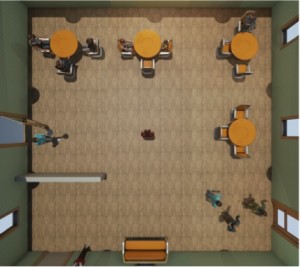
Currently, programs for auditory rehabilitation and training make use of structured learning at the clinic or at home. These programs provide an intensive training regime that teaches an individual how to make full use of the sound information and listening options their hearing device provides. However, there is a growing realization that incidental learning, which happens during unstructured exploration, may provide advantages over the current training programs. People learn better in real-life, natural situations. Providing realistic listening situations as part of auditory training–especially if they are difficult ones–may help people retain their skills better, and apply them more successfully to new situations.
With their audiologists help, it is also important that people with hearing loss set realistic expectations about the benefits and limitations of their hearing device. Aural rehabilitation goals need to be challenging but attainable. This requires both the person with hearing loss and the audiologist to understand the listening situations that are encountered–and practice how best to respond to each in order to maximize the listening experience.
Project Focus
This project aims to develop a prototype for realistic simulation of real-world listening situations. It will let a person experience both the benefits and limitations of their hearing devices, and help develop realistic goals and expectations. It also will let the person train specific listening scenarios, under the guidance of the audiologist.
The program provides an interactive environment, which consists of realistic soundscapes. These cover a variety of listening situations with varying degrees of difficulty. The listening experience changes in response to the user’s exploration of the environment. This allows the user to experience the acoustic factors that affect hearing and sound processing, without the stress that can occur in real world situations. It also lets the user explore the technology and communication strategies that are aimed at improving sound detection, speech understanding, as well as the overall listening experience. Users can learn in a self-paced and self-directed manner in a stress-free, realistic environment. This project is expected to open up new avenues for rehabilitation that neither auditory training nor informational counseling provide.
Project Team
This project is led by Gallaudet University. Team members include:
- Dragana Barac-Cikoja, PhD (Investigator), Associate Professor, Program Director – PhD in HSLS, HSLS Research Center Director
- Linda Kozma-Spytek, MA, CCC-A (Investigator), Senior Research Audiologist, Technology Access Program, Gallaudet University
- Stephen D. Julstrom (Consultant), Consultant, Julstrom Consulting and Development, Chicago, Illinois
- Kevin Cole (Consultant), Open Source Developer, NOVA
- Marco Sirabella (Consultant), Student Assistant, NOVA
